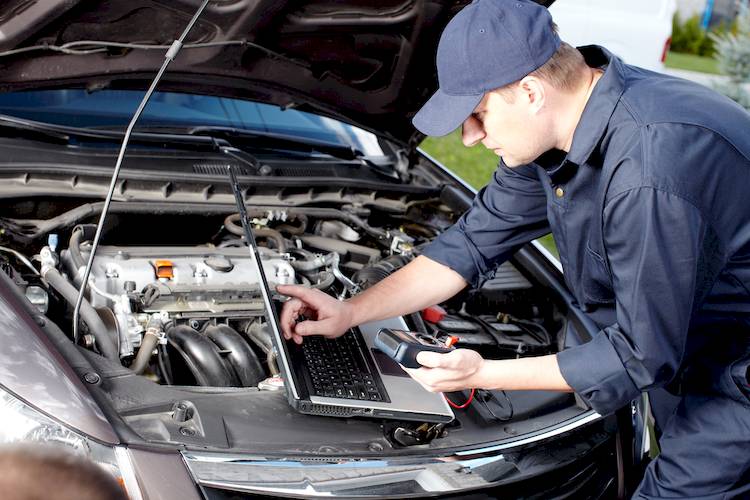
What benefits do aftermarket suspension components offer?
The suspensions of most modern cars and trucks are carefully designed to provide adequate performance in a variety of conditions. However, every suspension presents many trade-offs as manufacturers must design their vehicles to meet different needs and conditions while ensuring that most customers' expectations for ride and handling are met effectively and safely. And, of course, cost matters whether the manufacturer charges $XNUMX for a Kia or $XNUMX million for a Koenigsegg.
But your needs and budget may not match what the manufacturer had in mind for their particular model, in which case you may want to consider upgrading your suspension with aftermarket parts.
Suspension components - OEM (original equipment manufacturer) and aftermarket - vary so much that there is no single answer. Instead, it makes sense to consider suspension modifications on a case-by-case basis.
Some of the most common aftermarket components and kits
Tires: Tires are part of the suspension, and changing tires can have a surprisingly significant impact on handling, road holding under varying conditions, and even ride comfort. Some tires provide "grip" on dry roads that is superior to OEM choices, others greatly improve winter conditions, and you can even find tires that provide a quieter, more comfortable ride or improved fuel economy. In many cases, the main trade-off is that better tires wear out faster.
Wheels: Unlike tires, the choice of wheels is usually an aesthetic decision. Theoretically, a larger wheel and correspondingly lower profile tire can improve handling, but in practice the effect is minimal or non-existent. Some aftermarket wheels offer improved weight, but many are actually heavier, not lighter, than the stock ones.
Camber kit: Drivers who have installed aftermarket wheels with extended offset, which means the tires protrude farther from the vehicle, often find that camber (tire the wheel in or out) is adversely affected; installing a "camber kit" can ensure proper alignment.
Shock absorbers: Aftermarket shock absorbers can improve handling at high speed or (especially for trucks and SUVs) when driving on very rocky or bumpy roads. Some aftermarket dampers are even adjustable so the owner can fine-tune the ride to their liking. Typically, these adjustments require something to be changed (such as turning a dial) under the vehicle, but some are electronically adjusted from the cab. High quality aftermarket shock absorbers can also be more reliable than stock ones. This is not a big deal for passenger cars, but is a major problem for off-road trucks.
Bushings and connections: Replacing soft rubber bushings with stiffer ones, sometimes made of nylon, reduces the "play" between suspension components, which can mean improved road feel and sometimes handling at the limit, by increasing vibration and ride stiffness.
Anti-roll bars: Fitting a thicker and therefore stiffer anti-roll bar, often with stiffer bushings, can improve the car's handling by reducing its tendency to lean outward when cornering. Matching the front and rear anti-roll bars can also change the car's tendency to "oversteer" or "understeer". The main disadvantage is reduced comfort and sometimes stability on the road in bumpy conditions.
springsA: Aftermarket springs are often part of complete suspension kits, or at least paired with new shocks. Replacement springs can be stiffer or softer than stock; stiffer springs can improve handling in race track-like conditions at the expense of ride comfort, while softer springs can be used to improve an off-road vehicle's ability to negotiate rough terrain.
Lowering kits: Some drivers install aftermarket "kits" to lower their vehicle's ride height. These kits come in many forms and can include new springs and spring seats, new dampers or struts, and sometimes even hydraulic (fluid) or pneumatic (air) systems that allow the rider to change height while driving. In theory, a lowered car can handle better, be safer, and have somewhat more aerodynamic characteristics, but in practice, many drivers also prefer the look of a lowered car.
lift kitsA: On the other hand, some owners want to increase their truck's ground clearance, usually to improve its off-road performance. A raised or "jacked up" truck can also use larger tires (sometimes much larger - some monster trucks have ten-foot tires), but the main benefit is increased suspension travel, which means the wheels can move up and down further. than a truck. rides over bumps. Designed for serious off-road use, the kits include new springs, dampers and various other parts such as steering stabilizers, all designed to increase suspension travel when working in harsh, extremely bumpy conditions.
coilover kits: A coilover or coil damper kit replaces most of the vehicle's suspension (almost always at the front and often on all four wheels) with a coil damper MacPherson strut design option. Well-designed coilovers provide improved handling at high speeds and reduced and often adjustable ride height, sometimes without noticeable loss in ride quality, and are therefore highly regarded by those who race their cars from time to time.
As you can see, suspension replacement parts can have many benefits. Choosing the parts or kit that best suits your needs is critical, as many "benefits" may not matter to you, and every suspension change requires trade-offs.
What is the advantage of suspension spare parts? Aftermarket suspension components can range from relatively simple parts like stiffer bushings to suspension overhauls including lift kits and coilovers. The benefits vary depending on the parts involved, but in general for cars the goal is better high speed handling (at the expense of ride quality) and sometimes controllability, while for trucks it is increased ability to handle very rough terrain.
